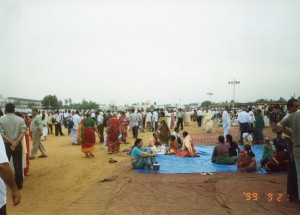Why are Indian temples much more ornate than Egyptian pyramids? We saw some reasons in yesterday’s post. But a cultural landscape has more than just a few dimensions, and there’s no culture that’s vaster than India’s.
Ancient India’s political map was as bewilderingly large as her spiritual landscape. Both domains went hand-in-hand in shaping Indian thought and art. Washington D.C.’s chaos has nothing on ancient India’s.
Ancient Greece, Rome and Han China unified themselves with monumental political centers, such as Athens, Rome and Chiang An. Their institutions (the Han court bureaucracy), literary canons (Homer and Hesiod; the 5 Confucian classics) and representative philosophers (Plato, Aristotle and Confucius) became centers of gravity that Western and Chinese civilization structured their thought around. But India’s political map took off and flew.
King Ashoka had unified all of India except the southern tip in the 3rd century BCE, but his successors were divisive. Invaders then swooped down from Afghanistan and took over. Indians didn’t put up a united front. But this turned into a cultural strength.
One invader after another got absorbed into India and added its own thought and art to her. Without a single political center that endured for several centuries, India didn’t hammer them into one set of a few limited forms.
Shakas from Persia conquered northern India in 80BCE and introduced forms of sun worship that they inherited from Iran.
Then came the Parthians, also from Persia. The Shakas and Parthians introduced the riding horse on a wider scale and improved the cavalries.
Several invaders wore turbans and made them fashionable.
Then in the first century CE, the Kushanas came from Afghanistan and its king Kanishka built an empire that straddled Central Asia, India and China–and thus the Silk Roads. India drank up all the cultural wealth like a thirsty elephant. Mahayana Buddhism and Greek-style sculptures of the Buddha were two of the most biggest influences.
But this is India, and thus only a beginning. The list of subsequent kingdoms is as vast as a Bollywood song and dance number. Guptas, Satavahanas, Vakatakas, Chalyukas, Pallavas and Cheras governed swaths of land for awhile. Each added more art forms to the sub-continent.
India absorbed all comers. The great number of art forms and ideas reinforced the sense that vastness and profuse flows of energy are more basic in nature than the limits that Egyptians and Greeks considered sacred. India’s physical geography encouraged this sense of profusion from pre-historic times. Every political entity that tried to unify it added all the more diversity to its vast landscape.
The bewildering number of forms in temples in yesterday’s post thus resonated more India than Egypt’s Great Pyramid would have.



Comments on this entry are closed.